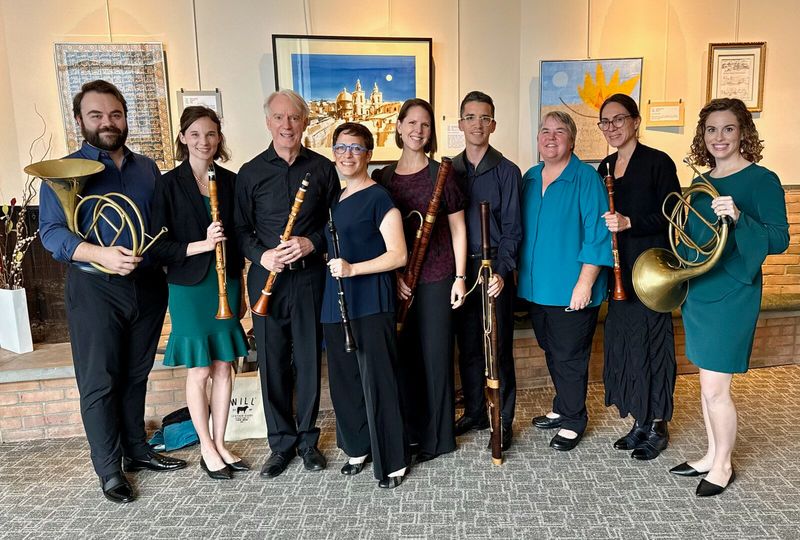by Peter Feher

Eight specialist wind players had come together for “Moonlit Mozart,” the first concerts of Les Délices’ 2024-25 season. (Two additional performances, in Akron on October 3 and in Rocky River on October 6, filled out the weekend.)
“This is a bucket-list program for me,” Nagy explained from the stage, detailing the reasons why this once-standard combination of instruments is so rarely heard today. If a modern organization can assemble a pair each of oboes, clarinets, bassoons, and horns, why not add flutes and strings and call it an orchestra? And this despite the fantastic original repertoire for wind octet.
Of course, there are factors to consider — not least that this ensemble, in terms of ease and maneuverability, is closer to a marching band than a string quartet. Perhaps, instead of describing wind octets as unjustly neglected in the 21st century, it would be more accurate to say that these instruments were briefly at the center of musical life during an exceptional period of history.
The appeal of a winds-only ensemble was apparent from the evening’s opening selections, in particular the Adagio from Mozart’s Serenade in E-Flat Major. This sextet (no oboes) burrows into the dark, sonorous possibilities of the horns and reeds, though the music itself is undeniably uplifting.
You could hear just how solid and robust the bass and middle voices of the group were, from bassoonists Stephanie Corwin and Clay Zeller-Townson to hornists Nate Udell and Sadie Glass. Bear in mind, this was the single piece on the concert that didn’t have double bassist Sue Yelanjian reinforcing the sound.
Two suites of opera excerpts demonstrated the sheer savviness of Nagy’s programming. Not only was it fun to witness these studied musicians tackling familiar material from The Magic Flute and Don Giovanni, it was also informative. One of the historical functions that wind octets served, at the peak of their popularity in the 18th century, was to reprise the big tunes from the favorite operas of the day.
The arrangements that Les Délices used were in fact done by two of Mozart’s contemporaries, meaning the individual parts were tailor-made for period instruments. Just think of the contrasting characters. Clarinetist Eric Hoeprich was a sprightly presence in “Der Vogelfänger bin ich ja” (I am the birdcatcher), Papageno’s first-act aria from The Magic Flute. Later, in the duet “Là ci darem la mano” (There we will hold hands), Nagy starred as a stricken Zerlina on oboe to Corwin’s delicious Don Giovanni on bassoon.
Singing is not all that different from wind playing. In general, everyone on Saturday — especially the inner voices of the ensemble, like second oboist Kathryn Montoya and second clarinetist Madison Vienna — sounded better the more air they put behind their instruments. That’s not always easy on a piece of wood made to specifications that are several hundred years old.
But the performers rose to the program’s challenges and were in top form for the final work of the evening, Mozart’s Serenade in C Minor (“Nachtmusik”). With opera still in the air, this ambitious octet brought the curtain down in dramatic fashion.
Published on ClevelandClassical.com October 15, 2024
Click here for a printable copy of this article



